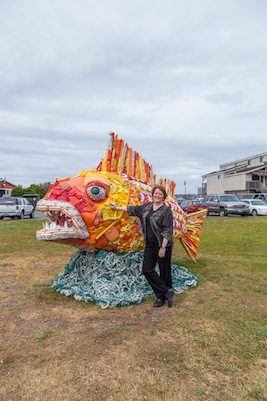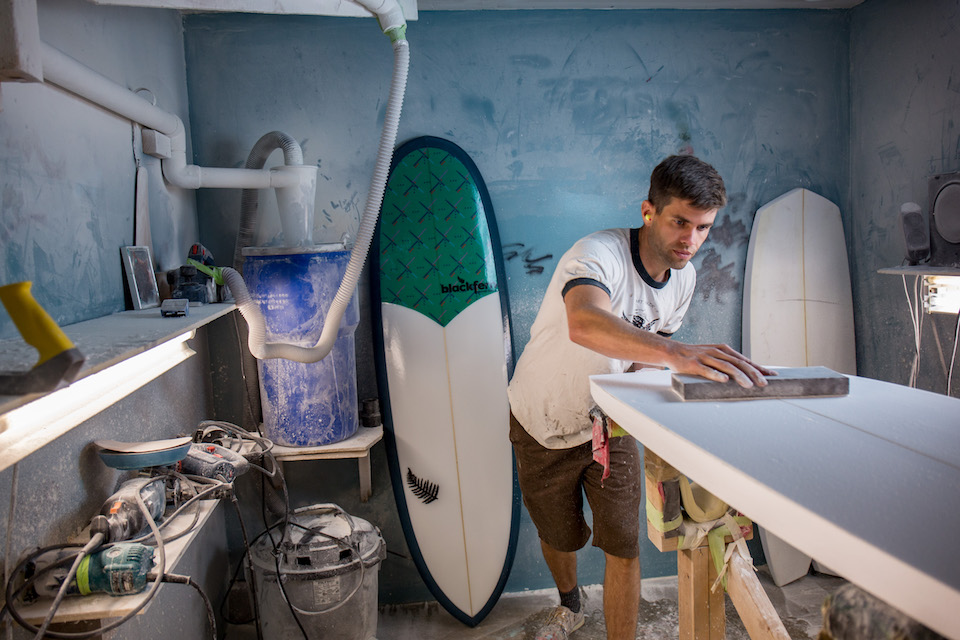ANGELA HASELTINE POZZI grew up in Portland and spent summers in coastal Bandon at her grandparents’ house. The beach became her peace of mind, so when she lost her husband in 2007 to a brain tumor and “everything turned upside down,” she left Portland for this childhood sanctuary.
 photo by Patricia Davidson
photo by Patricia Davidson
Pozzi sought healing and a new start. One day she saw a long line of plastic trash along the beach and thought, “What is happening to our ocean?” She saw people collecting agates in the distance and wondered why they weren’t picking up garbage instead.
As an artist and teacher, Pozzi had used recycled items for art before. She developed a simple, but ambitious idea—if she could pick up the garbage on the beaches to repurpose it as art, maybe she could help to save the oceans, and, perhaps, herself.
In 2010, she launched the Artula Institute for Arts and Environmental Education in Bandon with a mission to teach environmental issues through art, while calling attention to the giant flotilla of plastic pollution in our oceans. The nonprofit’s focus is the Washed Ashore Project, where the aim is to clean up the beaches and recycle the garbage for sculpture.
In the five years since Washed Ashore’s inception, Pozzi, her staff, and volunteer members have built more than sixty sculptures from sixteen tons of garbage collected from Oregon beaches. Scenes depict the sea life most affected by ocean debris, including an 8-foot seal, a 10-foot-long sea turtle, a Styrofoam coral reef and a walk-through replica of an ocean gyre. The organization offers workshops and has developed a traveling art exhibit to raise national awareness about oceanic pollution. The exhibit has traveled to aquariums, zoos, museums and science centers around the country. SeaWorld commissioned a twelve-sculpture exhibit, four of which will be on display in Orlando, San Diego and San Antonio parks until September.
After the debris arrives—sometimes by the truckload—it is rinsed, soaked, washed, scrubbed, sorted and tested before it can be used in the assembly process. About 95 percent of the waste that comes in is useable. Anything they can’t use is recycled, and toxic materials are given to the proper authorities.
Pozzi hopes people will grasp what their habits— such as not recycling—are doing to the oceans. “When you see bite marks [in the plastic] from fish,” she said, “you can’t argue with that.”









